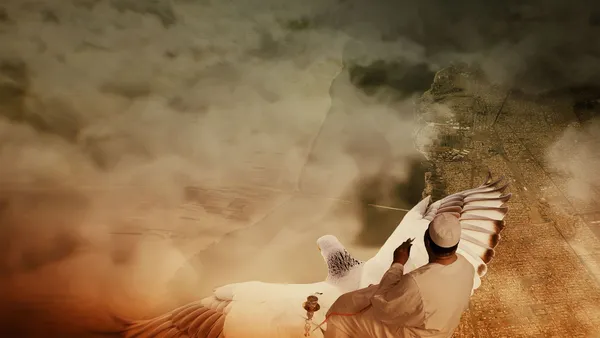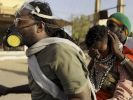Eye For Film >> Movies >> Khartoum (2025) Film Review
Khartoum
Reviewed by: Amber Wilkinson

In a world torn in so many directions by war, there is no shortage of documentaries about conflict - but it's unlikely you'll see any quite like Khartoum any time soon. A hybrid work that saw its filmmakers make a virtue of necessity, what began as a document of life against the turbulent backdrop of the Sudanese capital morphed into something else after the subjects of the film - and the filmmakers themselves - were forced to flee the country.
This is a film that doesn't focus on war itself, but on the survivors and the impact it has had upon them. It also documents the participants' attempts to recover from it, both those in front of and behind the camera.

Single mum Khadmallah was a tea seller in Sudan, while Jawad was an activist and Majdi a civil servant. Young friends Lokain, 12, and Wilson, 11, meanwhile, seemed to be mostly making do on their own, wandering the streets collecting plastic bottles to make money from recycling. Footage threaded through this film, shows all five in moments before the Rapid Support Forces (RSF) militia clashed with the army, displacing about 10 million Sudanese as the 30-year dictatorship fell in a coup.
After the conflict began, Sudanese directors Anas Saeed, Rawia Alhag, Ibrahim Snoopy Ahmad and Timeea Mohamed Ahmed - working with British director Phil Cox, who helped get the project rolling - decided that rather than halt the film, they would turn it into something else. That sentence does not do justice to what happened next, since both they and the film's subjects were scattered in Kenya and Egypt. As Cox explained when he and the other directors spoke to us: "We dropped the first film and we put all our resources and financing into just bringing people out, including the team and resettling them."
This spirit of collaboration can be keenly felt right through the film, which managed to bring everyone back together. There the directors take a dual approach. In one studio area, green-screen animations are used to help everyone re-enact moments that happened to each individual at the outbreak of war, with the help of the other participants. Meanwhile in a sort of 'green-room' break-out space, we see all five talking to one another in ways they would probably never have done if they had all been able to remain in Khartoum. This is a people before politics film, so we can see the broad ethnic mix of the populace through early footage, while one articulates the though that many problems stem from "focusing on thenicity rather than national identity". The children, as so often, cut to the chase: "You adults really messed it up".
Near the beginning, one contributor notes, "This is my truth" - and throughout you can see the ways in which the filmmakers are going the extra mile to empower their subjects. Group hugs are part of the process and trauma support is shown to be on-hand. Through this exercise a kaleidoscopic picture of Khartoum is created - that a kaleidoscopic background is also used for some interviews indicates the level of granular thought that has gone into all of this. Each participant is able to articulate their truth, whether it's Majdi's love of his pigeons and concerns for his son, or the children declaring, "Adults are stupid".
As the adults reflect on those they knew, the sense of a shattered homeland is powerful, but the filmmakers also use animation to create moments of fantasy, including the young boys riding through Khartoum on a lion, which adds an element of hope and healing. Words like 'caring' and 'sharing' have become overused but this film might just restore your faith in both of them.
Reviewed on: 09 Feb 2025
















